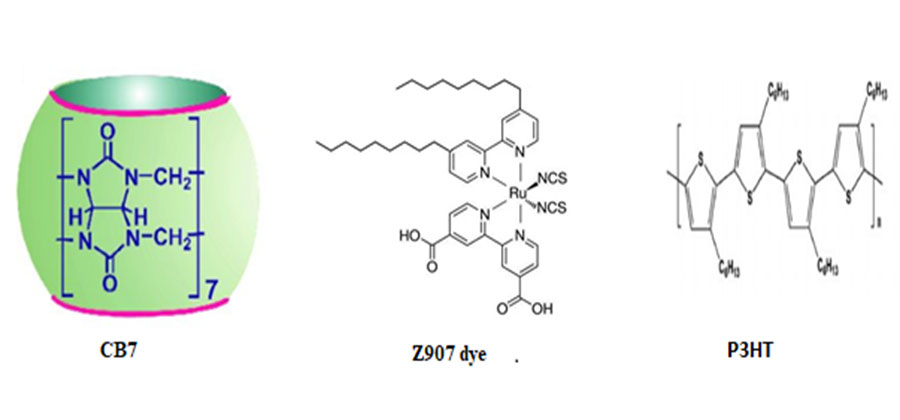


Indian Journal of Science and Technology
Year: 2020, Volume: 13, Issue: 16, Pages: 1686-1692
Original Article
Hmoud Al-Dmour1∗
1 Department of Physics, Faculty of Science, Mu'tah University, Mu'tah, 61710, Jordan.
Tel.: 00962795586638
∗Corresponding author:
Hmoud Al-Dmour
Department of Physics, Faculty of Science, Mu'tah University, Mu'tah, 61710, Jordan.
Tel.: 00962795586638
Email: [email protected]
Received Date:09 April 2020, Accepted Date:04 May 2020, Published Date:10 June 2020
Objective: The objective of this study was to assess the influence of encapsulation of cis-bis(isothiocyanato)(2,2'-bipyridyl-4,4'-dicarboxylato)(4,4'-di-nonyl-2'- bipyridyl) ruthenium(II) (Z907 dye) to macrocycle cucurbit[7]uril (CB7) (host) on the performance of nanocrystalline titanium dioxide (nc-TiO2)/ poly3-hexylthiophene (P3HT) heterojunction solar cell. Method: Two solar cells composed of five layers with and without the encapsulation of Z907 dye on the top of TiO2 film were used. The admittance spectroscopy was measured at different frequencies to confirm the modification of the interfacial layers' properties in solar cells. Findings: The results demonstrated different capacitance responses depending on the voltage applied to the devices. The encapsulated device had a higher capacitance response to forward bias and reverse bias than the non-encapsulated device at the same frequency. The negative capacitance of the two devices was also observed. The results were attributed to an increase in the accumulation of charge carriers and the formation of electric dipoles at the junction which rapidly decreased the capacitance to negative values. Application: This study demonstrated that using encapsulation of dye improved the solar cells' maximum electric power to 0.14mW/cm2 , while it was 0.04 mW/cm2 in the non-encapsulated solar cells.
Keywords: Solar cells; Junction capacitance; X-ray diffraction; SEM micrograph; Geometric capacitance
© 2020 Al-Dmour. This is an open access article distributed under the terms of the Creative Commons Attribution License, which permits unrestricted use, distribution, and reproduction in any medium, provided the original author and source are credited.
Published By Indian Society for Education and Environment (iSee)
Subscribe now for latest articles and news.